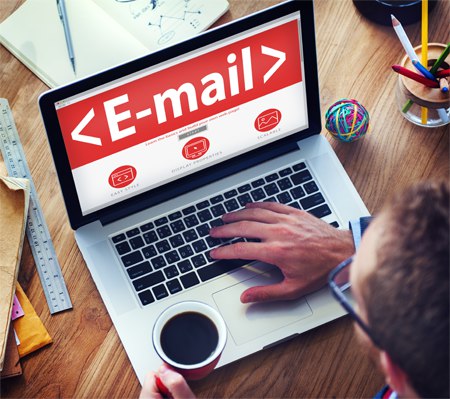
If you have an email list, you definitely want your customers to open your emails. Sometimes this can be easier said than done. One email may be wildly popular and more than 50% of your list may open it. On another occasion, perhaps only 10% of your subscribers open the email, leaving you scratching your head and wondering what went wrong. By following these four steps you’ll be able to make your emails more valuable, get more people to open them, and ultimately get more clicks through to your website. Let’s take a look at how professionals craft highly successful emails.
Tip 1 – Save The Customer Money
Can you name one person who wouldn’t like to save money on a product that they’re likely to buy anyways? I can’t either. That’s why helping a person save money can be such a powerful way to get them to open an email that you’ve sent. You can be creative with this too, and don’t be afraid to use split A/B testing.
For example, to half of your email list you may want to send an email that offers them a set discount. Say $5 off any order over $50. To the other half of your email subscriber list, you might want to send another offer, say free shipping on all orders over $50. Both of these promotions will probably end up costing you about the same (unless you’re shipping lawnmowers via UPS!) but you may find out that one promotion ends up being more effective than the other.
Tip 2 – Make it Urgent
Sometimes it can seem counter intuitive to have an offer like “Sale lasts only 24 hours” or some other time sensitive statement. After all, we’ve all seen the telemarketing ads that assure us that the sale will last only another 18 minutes, and we all instinctively feel that this isn’t true.
The thing is, these time sensitive statements actually work! When you set a deadline people are more likely to take action. They feel like they don’t have time to wait and do it later, so they open your email and click through to your website as soon as they receive the email.
Again, you may find that different tactics have different rates of success. For example “free shipping in the next 24 hours” may work better than “10% sale on all items store wide in the next 24 hours!” You’ll have to find out for yourself what works best.
Tip 3 – Keep it Clean
Mark Twain said:
“Writing is easy. All you have to do is cross out the wrong words.”
While we can’t all write like that great American figure, we can certainly try. When you write your emails, keep them short and simple. Your customers care first and foremost about how your product or service will help them. Even if they like you and your business, they still probably don’t want to hear about how your orders are up, or you’ve just hired a great new designer.
Write a clear subject line, and then expound on that subject line in the email. Keep it short, sweet and simple. Finally, follow point four, which is what it all really comes down to.
Tip 4 – Have a Clear Objective
From the subject line, to the text (and images) in the email, to the very last word, you want to be moving the customer towards a clear direction. Maybe you want them to click on the product page for your newest gadget. Maybe you want them to sign up for a seminar. Maybe you want them to follow you on Twitter, the list is endless!
Regardless of what you’re trying to achieve, you want to have this one goal in mind as you craft the whole email. If you send too many mixed signals a customer is going to get confused and may delete your email. That’s no good, especially after you’ve spent so much time crafting it!
Wrapping it All Up
To bring this article to an end, let’s do a brief recap of how you can make an awesome email that people are going to open and take action on.
- Save them money (or offer them a service they want).
- Set a deadline (act in the next 24 hours, or you’ll miss out!).
- Say what needs to be said, nothing more (you’re not Tolstoy, keep it short and sweet).
- Move your reader towards an end goal (decide what you want the reader of your email to do, then use the entire email to move them towards that goal).
